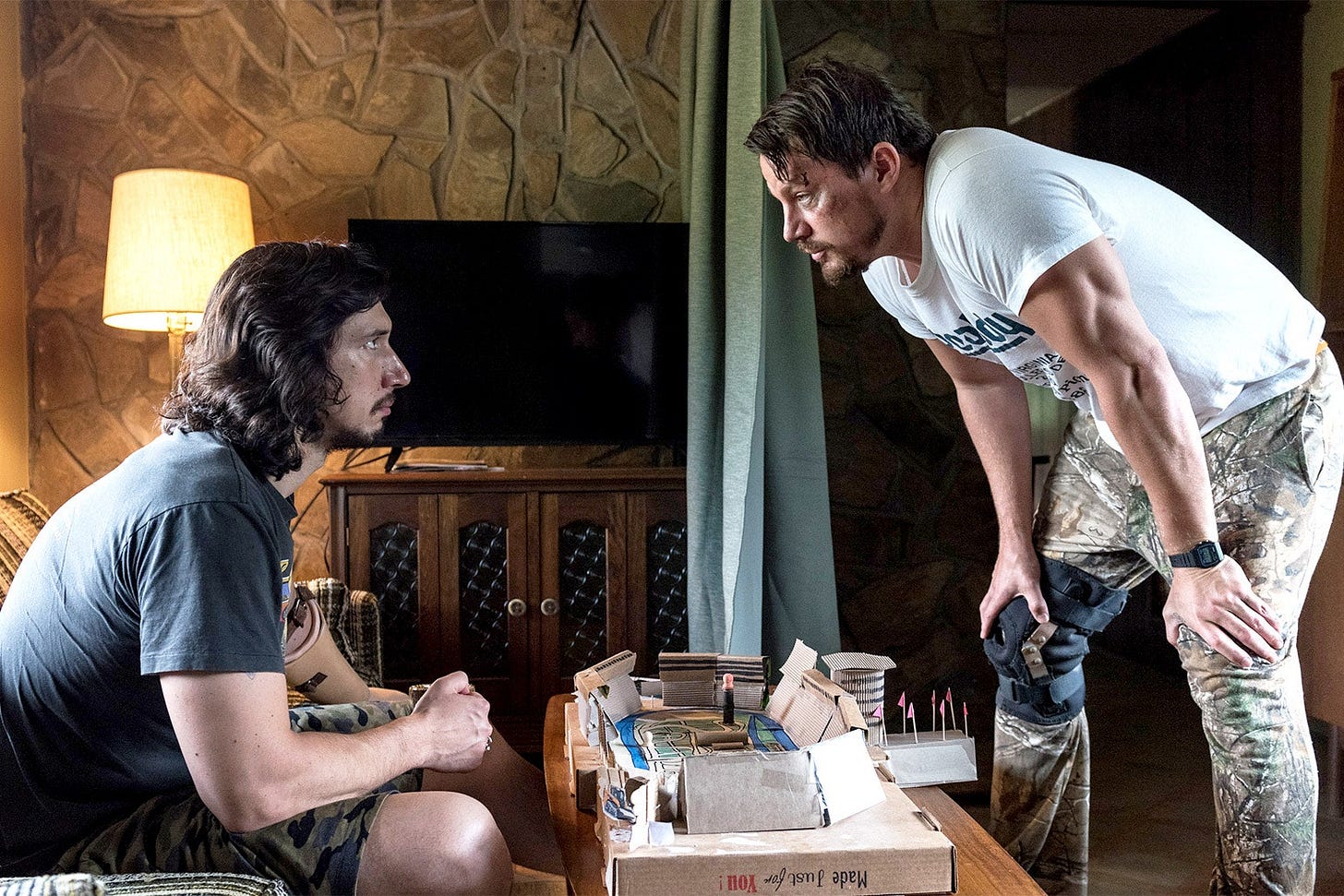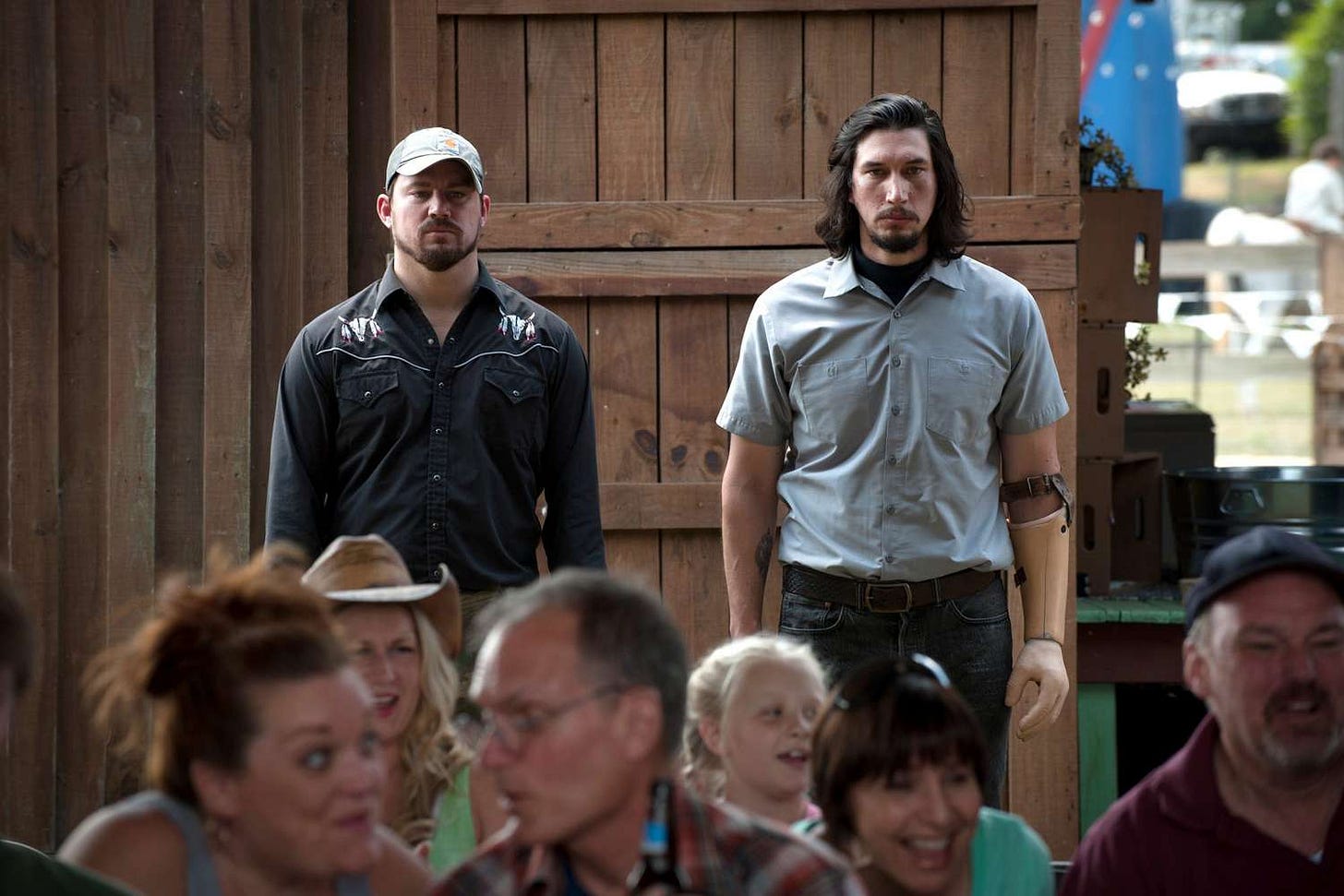Steven Soderbergh was actually my favorite filmmaker for a while there, so I was excited that, upon my incarceration, he had returned from a brief retirement. Unfortunately, it sounded like he felt “Logan Lucky” could be a moneymaker for him, but his typically muted tone along with upstart distributor Bleecker Street led to the movie being ignored at the box office.
Which is a pity, because this is a typically enjoyable, low key movie from him, with Soderbergh’s notably on-point eye for odd detail. When Channing Tatum visits brother Adam Driver at the bar, it feels like you can see the fingerprints on each bar glass. Even if Seth MacFarlane, of all people, shows up shortly after, starts a fight and refuses to shed an accent ridiculous even by the standards of the creator of “Family Guy”.
This leads into Tatum’s wily plan to rob the Charlotte Motor Speedway after they fired him, a bit of a gesture towards the realities of a working class lifestyle you don’t normally see in movies anymore. You can see this as a movie from the seventies in that way, with maybe Charles Bronson and Walter Matthau as the brothers. The gang they assemble isn’t exactly Ocean’s Eleven, though you can hear an echo in the casting of legacy actors Brian Gleeson and Jack Quaid, playing brothers much like Casey Affleck and Scott Caan did in Soderbergh’s previous heist trilogy.
Those last two have a third brother, the incarcerated Joe Bang. This is likely the film’s highlight, as he’s played by moonlighting James Bond Daniel Craig. Craig is having a fun time with a sloppy Southern accent (a dry run for “Knives Out”, maybe), playing a crank who can turn anything into an explosive device. He is behind bars when the plan is conceived, but the movie highly suggests that this will not last. Relatedly, Hilary Swank shows up as an investigator who begins to gather intel on this elaborate heist. Honestly, this is Soderbergh trying to make smart, low-key entertainment for adults, but I think Swank maybe underplays it a bit, and her scenes don’t make a terribly strong impression.
While these two factors were not in any way similar, the movie is an attempt at reaching an underserved heartland audience in a manner similar to how Donald Trump campaigned the first time (largely while this film was shot). These are people who slave away at their jobs just to be able to afford not an exorbitant dream of a life, but something a bit more laidback than what they have. These are people who are bitter because of how they feel forgotten by a larger system, one that treats them interchangeably. The very start of the film resonates with me, in that Tatum works for the Charlotte Motor Speedway because of leg injuries suffered in his youth, injuries that now prevent him from doing the job. Late stage capitalism etc. etc. Like Donald Trump’s populist appeal, these characters exist on the margins and feel rightfully aggrieved. Soderbergh is too subtle to do a NASCAR hit job, but it’s not hard to see the glamorous presentation of the sport (complete with racer cameos) and the hardscrabble, low budget plan put in place. Of course, ultimately the movie is subdued and quiet – by contrast, Donald Trump is a loud, braying jackass. So I’m not sure how far this metaphor really goes.
One of the funnier scenes involves a farcical look at prisoners fighting over what they’re going to watch on the TV. This was a common disagreement when I was down, whether we had too many or not enough. Usually, the viewing options were decided by only a handful of guys. Usually the TV’s were controlled by the “cars”, the cliques. And they would discuss things in advance, so they were sure they wouldn’t miss an episode of their favorite show.
Something I don’t know if people know – the most popular show in every prison, by a considerable margin, was “Love & Hip Hop” on VH1. I would often hear guys planning their weekend by saying, “‘Love & Hip Hop’ is on in three days!” For those who haven’t seen it, it’s an entirely over-rehearsed “reality” show tracking the relationships between a series of hip hop has-beens and never-weres. Like many shows of this ilk, it seems recommended that “characters” disagree, fight, throw furniture at each other. Meanwhile, everyone calls the recording artists by their recording names, and not their real names, even when talking about weddings. Which I found terribly vexing – even in the Marvel movies, they call Captain America “Steve.” Largely, Mondays were spent watching “Love & Hip Hop”, followed by whatever companion show VH1 had at the time (often “Black Ink Crew”). And after that, everyone would sit through the rerun. Frankly, it was surprising to reenter the real world and find out that “Love & Hip Hop” wasn’t actually the biggest show in America.
Next week, our theme is Thanksgiving!






